The Alluring Rohiṇī
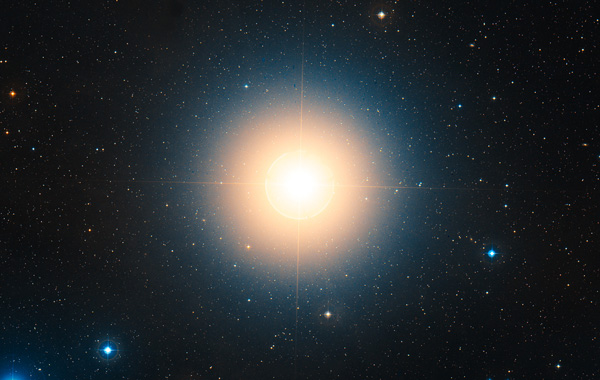
प्र॒जाप॑ते रोहि॒णी वे॑तु॒ पत्नी̍। वि॒श्वरू॑पा बृह॒ती चि॒त्रभा॑नुः।
सा नो॑ य॒ज्ञस्य॑ सुवि॒ते द॑धातु। यथा॒ जीवे॑म श॒रद॒स्सवीराः॑।
रो॒हि॒णी दे॒व्युद॑गात्पु॒रस्ता̄त्। विश्वा॑ रू॒पाणि॑ प्रति॒मोद॑माना।
प्र॒जाप॑तिं ह॒विषा॑ व॒र्धय॑न्ती। प्रि॒या दे॒वाना॒मुप॑यातु य॒ज्ञम् ॥ २॥
prajāpate rohiṇī vetu patnī |
viśvarūpā bṛhatī citrabhānuḥ |
sā no yajñasya suvite dadhātu |
yathā jīvema śaradas savīrāḥ |
rohiṇī devy udagāt purastāt |
viśvā rūpāṇi pratimodamānā |
prajāpatiṃ haviṣā vardhayantī |
priyā devānām upa yātu yajñam || 2 ||
“O Prajāpati, may Rohiṇī, your wife, approach [you].
With all the universal forms,
Vast, luminous [and] with varied light!
She should set us on the right Path of the Sacrifice,
So we may live our life in full strength!
Rohiṇī, Goddess, rose in the East,
Making all universal forms rejoice!
Strengthening the Lord Prajāpati with the offering,
Beloved of the Gods, may she come to [our] Sacrifice.”
The Beauty Queen of Zodiacal Stars
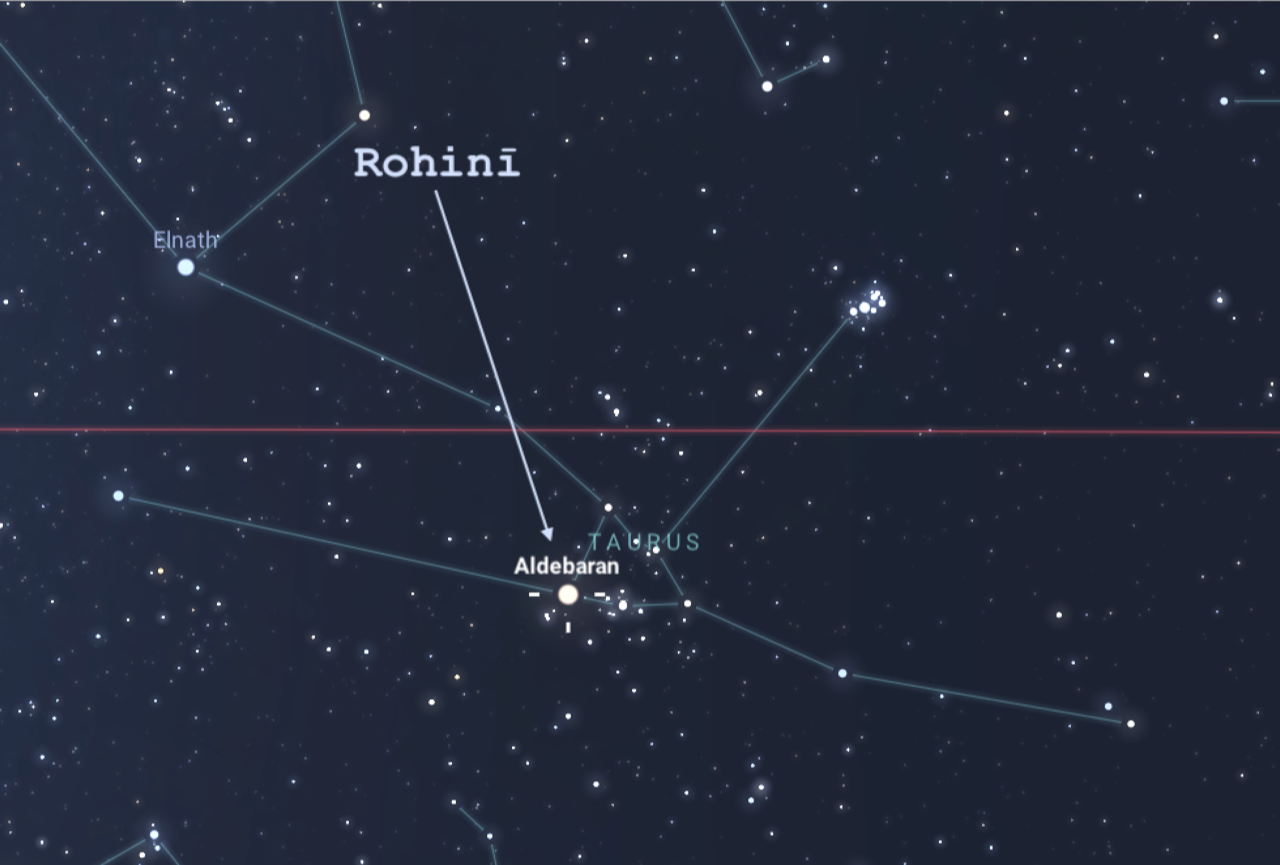
Rohiṇī (Aldebaran) is one of the brightest stars, not only of the zodiac, but also the entire cosmos. It shares the distinction of being the brightest zodiacal star with Al Tair, the marking star of Śravaṇa nakṣatra, both at an apparent magnitude of .75 and both counted among the four Royal Stars of Persia. The ancient seers of all cultures were well aware of the implication of the radiant stars that shine very close to the grahas as they travel on the ecliptic. Rohiṇī is located in the rāśi (constellation) of Taurus at 15°TA57’ ecliptic longitude and 5°S28’; ecliptic latitude where it shines with a reddish hue, adding a suggestive allure to its already showy attributes.
The rāśi of Taurus is huge and hosts many bright stars. It is hard to miss. As the crown jewel of this showy stretch of the zodiac, themes of Rohiṇī clearly include such qualities as charisma, beauty, charm, and undeniable magnetism. Rohiṇī natives are not wallflowers; they are often the center of attention—flashy, glittery, and colorful.

When seen in the context of the surrounding stars, the star pattern resembles a conveyance. Thus, the pratimā (symbol) for this nakṣatra is seen as some kind of vehicle ranging from a royal chariot to a simple bullock cart. The royal chariot speaks to wealth and opulence.
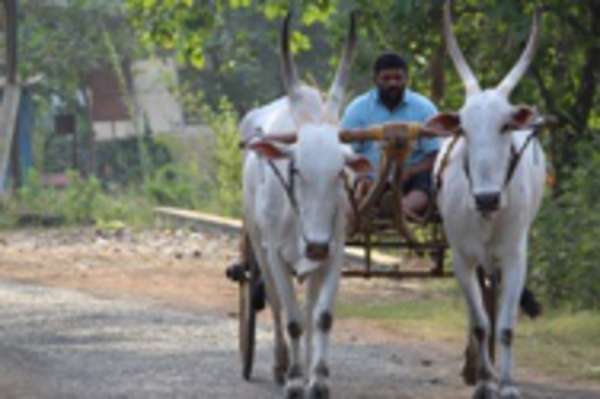
Because of its agricultural implications, the bullock cart connects to themes of growth, fecundity, and prosperity. Cows are also indicated by the bullock cart. Some say the bright grahas moving through the sky are likened to cows, which in the Vedic tradition symbolize sacredness and prosperity.
Rohiṇī comes from the Sanskrit root ruh which means “to grow.” Not only is this confluent with what the pratimā indicates, but it can also speak to the ability to rise in life, to ascend, and also to manifest, such as ideas or projects.
The Quintessence of Creative Power
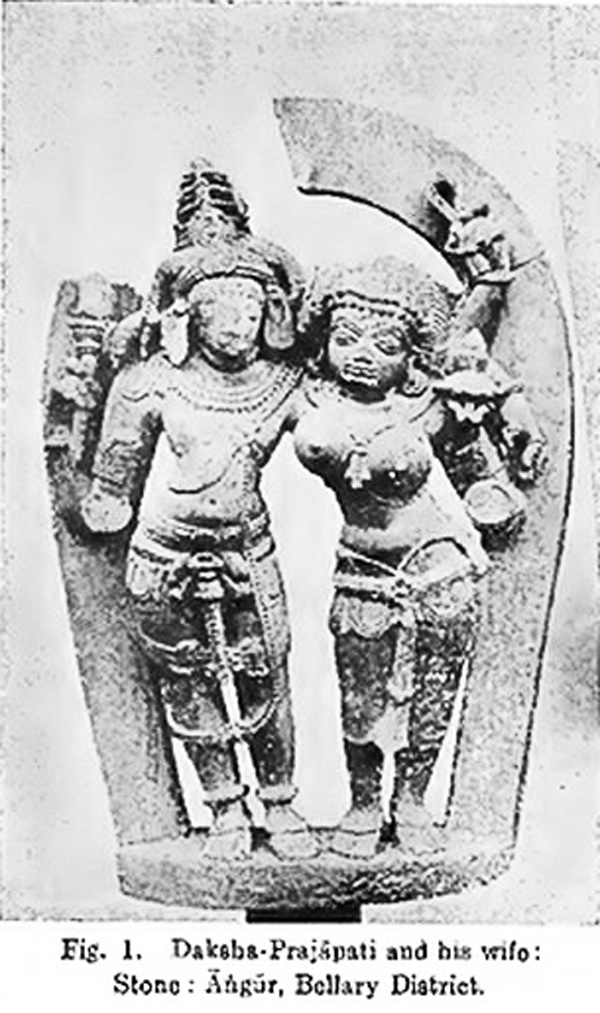
The deity ascribed to this nakṣatra is Dakṣa Prajāpti from Vedic literature or Brahmā from Purāṇic times, respectively, the creator and a member of the Hindu triad of Brahmā, Viṣṇu, and Śiva. There are so many stories about both iterations of these deities, which can lead to confusion. However, whichever name appears in a story, the essence of what is being conveyed manifests in attributes of natives influenced by this star.
O Lord of people (Prajāpti) there is none other than you who has given existence to all of these beings, may we be the possessor of grand riches
(RV 10.121.10)

The Cycles of Life—Creation and Destruction
Life, itself, is an act of creation, which concludes naturally and results in death. In order to experience life, Prajāpti made himself half mortal, the part afraid of death (Śatapatha Brāhmaṇa 10.1.3.2) and also that which seeks a timeless state, the part taught to strive for immortality through worship and tapas. This may be seen as an example for humanity to do the same, through gaining an understanding of the Self, therefore life and death themes are present in people who have Rohiṇī prominent.
The Largesse of Creation
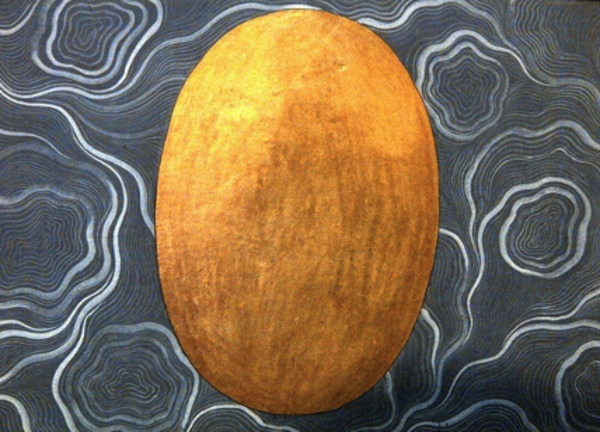
Brahmā came to prominence in the Purāṇas as the Creator. Among the numerous creation stories, one popular account is that he created himself in a golden egg known as Hiraṇyagarbha. Another is that Brahmā was born out of a lotus flower that grew from the navel of Viṣṇu.[1]

Lord Brahmā, as the ruling deity of Rohiṇī Nakṣatra, implies that a person with this star prominent in the nativity might exhibit growth and creativity in various aspects of life. A further refinement of this creative power is inferred by another of Brahmā’s Vedic names, Dakṣa, meaning “competent, dexterous, or expert.”
Therefore, performing arts, crafts, ingenuity in the creation of things, mental and physical involvement with drama, acting, music, dancing, and other skills are often expressed in natives born under this star.

As expressed in the Śatapatha Brāhmaṇa, Agni, son of Brahmā, being hungry, turns to his father for food, wherein Prajāpti rubs his palms together and produces ghee. He offers the ghee to the sacrificial fire, ‘Agni.’ At that moment, all vegetation and its varieties spring up from the surface of the Earth.[2] All creation, whether progeny, crops, animals, plants, or trees, are associated with Brahmā.
Pitfalls of Pride
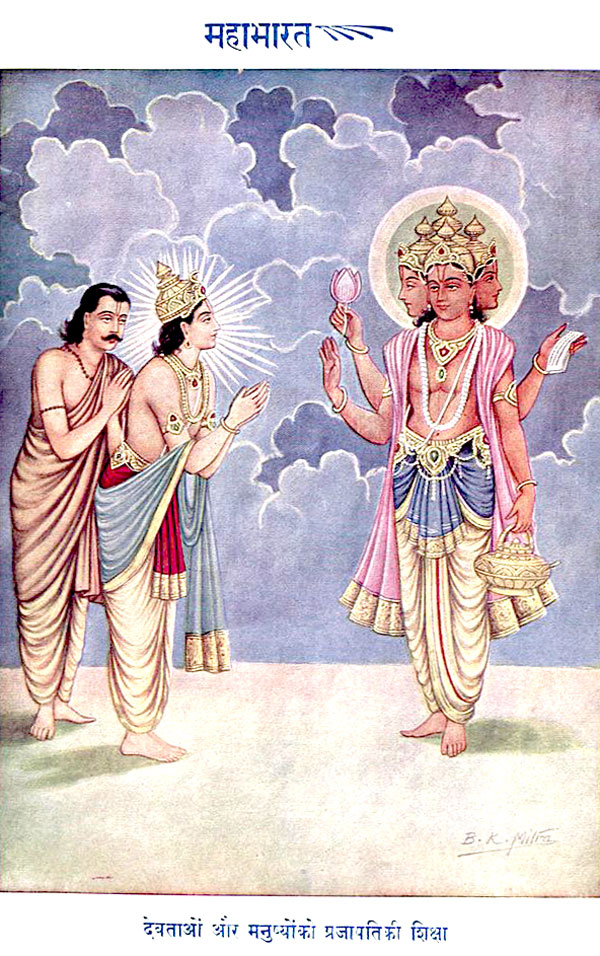
This nakṣatra can also exhibit pride. Hardly ever does Prajāpti accept any other god as his equal, consequently, under unfavorable chart conditions, an egocentric nature may cause problems for the native. Brahmā has issues of his own involving inappropriate pursuit of women and an incident of lying to Śiva, which cost Brahmā one of his heads.[3] Because of this behavior, Brahmā is less celebrated in India, with only a few temples existing in his name. Therefore, from these two deities, attributes such as narcissism and self-importance, as well as misrepresenting and being passed over can be experienced with this nakṣatra.
These deities contribute to the Rohini profile of productive and dynamic and natives who are frequently contributors in the material world, manifesting abundance and prosperity. They can be highly creative individuals often involved in performance, visual arts, and film. Opulence and lavishness can be a feature of their lives. Though tending toward materialism, Rohiṇī nakṣatra has the capacity for inspiring others, as it was Brahmā who taught the other gods the way of the sacrifice.
The Moon’s Favorite Wife
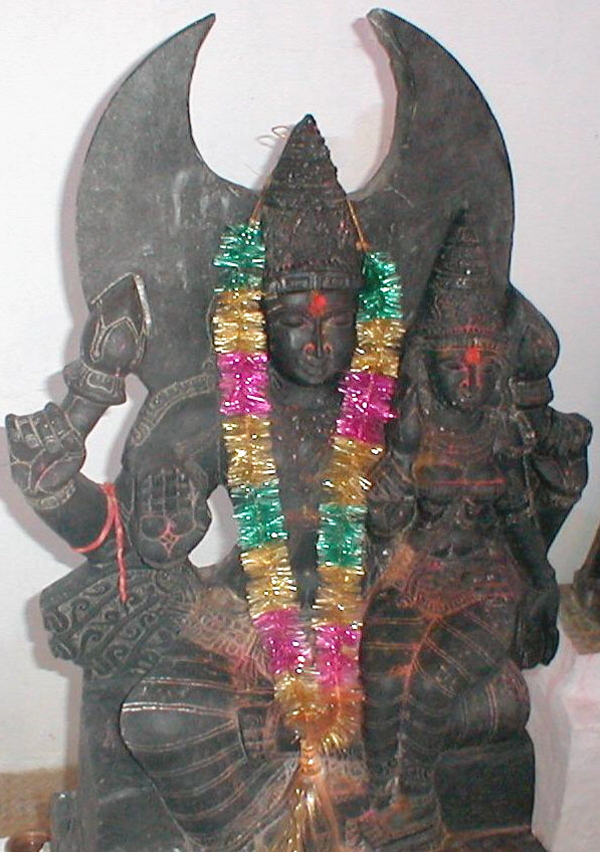
Mythology tells us that Candra, the Moon, married the 27 nakṣatras, all sisters. He was charged by their father to spend equal time with them, but Rohiṇī captivated him with her beauty, romance, and sensuality. After complaints from the other wives, an intervention (by the gods), and a curse, the Moon agreed to visit all his wives, in turn, for an equal amount of time. However, Rohiṇī still remains his favorite. On the downside, natives here can have traits of self-conceit and eroticism. Complex emotions involving sexual desires can also be present in this nakṣatra, also stemming from the stories of Brahmā’s inappropriate desire for beautiful women in the family leading to all kinds of trouble.
Rohiṇī Nakṣatra in Action
Just as the entire constellation of Taurus has many bright stars, of which Rohini is the brightest, the entertainment world is “lit up” by the natives of this nakṣatra. Such luminaries as Mick Jagger, Martha Graham, Billie Eilesh, Ginger Rogers, Julia Child, etc. all have important placements in Rohiṇī. We will look at a very sparkly example.
The Queen of Rock ‘n’ Roll
Tina Turner, November 26, 1939, 22:10, Nutbush, TN USA[4]
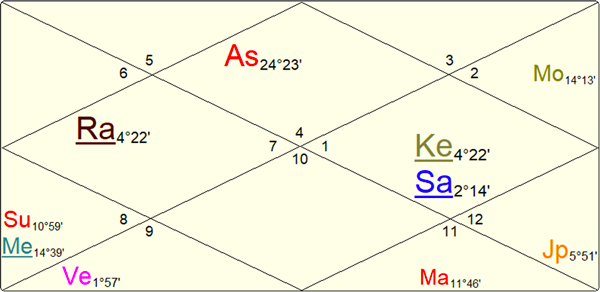
Lighting Up the Stage

The iconic Tina Turner is the entertainment world’s version of ‘glittering Rohiṇī,’ beaming her energy and charisma (to audiences all over the world) for the last 50 years. Multitalented as a singer, actress, and songwriter, she rose to prominence as lead singer of Ike & Tina Turner before launching her own successful career as a solo performer. She is one of the best-selling recording artists of all times and has received 12 Grammy Awards, including Lifetime Achievement awards. Ranked by Rolling Stone as one of the 100 greatest artists of all times, she was the first black artist and first woman to be on their cover.[5]
Bathed in Moonlight
In Jyotiṣa, the Ascendant, Ascendant lord, and Moon are considered to be the most important factors in unfolding a chart. It is befitting a luminary like Tina Turner that her Ascendant lord IS her Moon, and it is completely full (Pūrṇimā) and right on the yoga tārā of Rohiṇī! The implications of Moon being her lagna lord is that her karmic pattern is more indelible. Everything we see is multiplied by two, as two of the three reference points are the same significator. In a chart like hers, with a Moon like hers, this is a huge factor in what has made her a superstar.

With a Moon in Rohiṇī nakṣatra, Turner is a great example of expression through the performing arts with an ability to dance and vocalize. Music and the stage define her, as she started performing at a young age and has continued to do so for over 60 years. She has been quoted saying “I need that on stage. I need a burst of life. That’s entertainment for me.”[6] Visible as the star Aldebaran itself, Tina is a beacon for musicians and admirers, alike.
That she was born at night with that stunning Pūrṇimā Moon on full display underscores her visibility “wow” factor. It is notable that the great benefic, Jupiter, powerful by being in its own rāśi of Pisces, was also bright and well above the horizon. It occupies the ninth bhāva of good fortune in Turner’s chart and is unafflicted.
Her shining Moon dominates the chart, just as the meanings of Rohiṇī dominate her life. Located in the eleventh bhāva, the Moon will fructify her goals and aspirations, likely through creative pursuits, music, writing, and the entertainment industry, as the themes of the 5/11 axis meld together through the sambandha (mutual relationship) of Sun, Moon, and Mercury.
The mutual aspects with the Sun and Mercury, and simply the fact that the Moon itself is full and exalted make several very auspicious combinations (yogas) for prosperity (Dhana Yogas) and pre-eminence (Rāja Yogas). The texts tell us that a full Moon in Taurus is, itself, a Rāja Yoga. It is also a vargottama[7] full Moon making another Rāja Yoga. An exalted graha aspected by a friend (Sun) is yet another, and that same combination independently makes a Dhana Yoga of the lords of the first and second bhāvas, indicating self-generated affluence. This stacking of yogas across that 5/11 axis is a tremendous support for the arena in which she shines.
The Wheel Turns
As Prajapati is connected to time through his identification with a year (Śatapatha Brāhmaṇa 11.1.6.2) Rohiṇī is associated with life cycles. Tina’s early life as a woman of color subjugated in the ‘60s South, was marred by desertion of her mother and later her father, as well as separation from her sisters. There are very difficult combinations for the fourth bhāva, the place of mother, contentment, and a sense of belonging. Mixed-conditioned Saturn (strong by retrogression and weak by debilitation) and the Rahu/Ketu axis afflict that bhāva with no relief from any benefics and the lord of the fourth goes to the troublesome sixth bhāva.
Matters worked out better with respect to the tenth bhava, even though the same grahas affect that area of the chart. However, there is a is a Parivartana Yoga[8] that helps strengthen the tenth, yet everything shows in a chart and Turner had her share of heartaches, regretful actions, and decisions. A debilitated seventh lord speaks to issues with partners. Passion and indiscretion are strong themes in this nakṣatra, and her life was plagued by both. Pregnant as a senior in high school, she was deserted by the father and became a single mom.
More difficult, however was the abusive relationship with Ike Turner, a marriage that was marked by incredible outward success but deep unhappiness and fear.
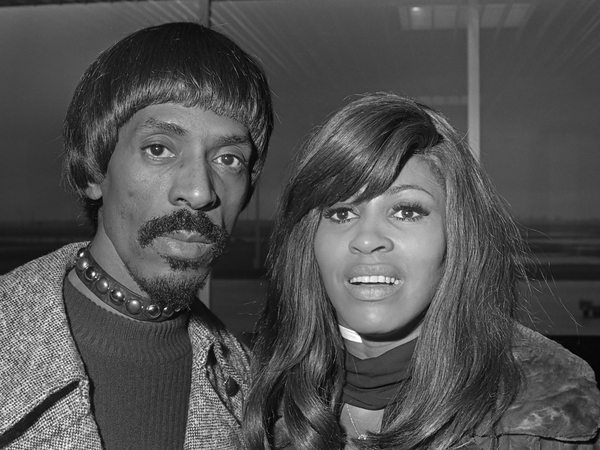
She later revealed that Ike was abusive and promiscuous throughout their marriage, which led to her suicide attempt in 1968 by overdosing on Valium.[9] When Ike and Tina Turner were inducted into the Rock and Roll Hall of Fame in 1991, he was incarcerated and she did not attend. This relationship, starting out as plutonic, moving into passionate and then abusive illustrates Rohiṇī’s emotional complexity in regard to relationships and sexual behavior.
The issues with relationships are seen in the chart in several ways. Her seventh lord, Saturn, though retrograde is also debilitated. Even though it is aspecting into its own seventh bhāva, this does not protect the partner. Saturn, itself, is in the Rāhu/Ketu axis with no benefic aspecting to soften the situation. The kāraka (significator) of the seventh is in the problematic sixth bhāva, a hot spot for seventh bhāva matters, as it is 12 away from the seventh, intimating loss, while being 6 from the lagna, indicating grief, enemies, and arguments.
Her career underwent several cycles of retreat and resurgence. Leaving the marriage and the bitter divorce that ensued left her virtually penniless and worse, as there was debt and lawsuits from cancelled concert bookings for the duo. She once again had to reinvent herself. She appeared on TV game shows, with the Osmonds, Brady Bunch, etc., to raise funds to right her ship. Luckily, her label, United Artists, helped her finance tours that led to a reemergence and a new, sexier image. This occurred during Jupiter daśā—the good fortune and luck combination.
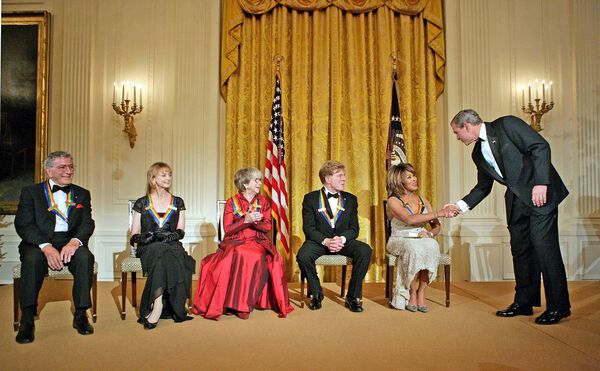
A high point in her life was being recognized by the Kennedy Center Honors, alongside such luminaries as Tony Bennett, Suzanne Farrell, Julie Harris, and Robert Redford. A more public comeback happened at 66 years of age at the Grammy Awards, performing with Beyonce. That led to yet another tour featuring a compilation of her greatest hits. It was huge and became one of the best tours of all time.[10]
In 2009, she retired from performing but continued to maintain a high profile through past hits being rereleased and charting high, culminating with involvement in a musical based on her life story that opened in London in 2018 and Broadway in the fall of 2019.
And true to the cyclical theme, she came out of retirement in July 2020 to release a remix of one of her greatest hits, “What’s Love Got to Do with It” and became the first artist to have a Top 40 hit in seven consecutive decades in the UK.[11]
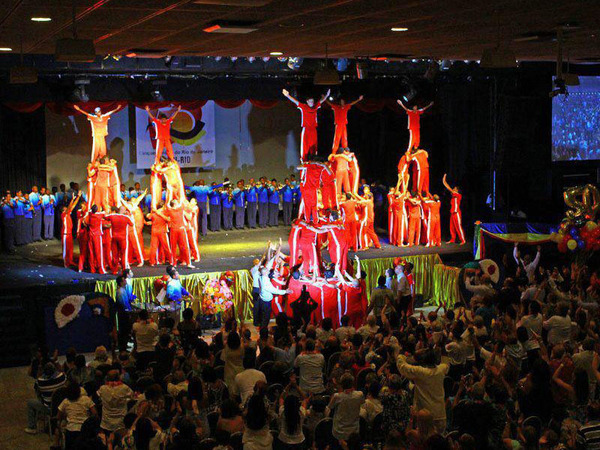
Reflecting the story of Prajāpti making himself half mortal in order to understand and experience all sides of life, and its underlying yearning for timelessness and immortality, Turner had a major realization and rebirth with Buddhism. In 1973, at the beginning of her Jupiter daśā, she took her first Buddhist religious vows. Of all the Buddhist paths, she chose a Soka Gakkai, a school of Buddhism that is the most closely aligned with her Rohiṇī traits. Soka Gakkai considers dance and other genres of performance art to be a major aspect of its peace activities and creating a more humane society.
Jupiter in the ninth bhāva of transcendental wisdom and deep knowledge, and the activation the Parivartana Yoga, support this event that transformed her life. Much later, in 2005, she met with the Dalai Lama and co-founded a project involving spiritual music.
As the star of growth, Tina, against all odds, was and is ever-committed to improving her life circumstance. This is evident from the beginning of her career as “Proud Mary” up until now. The following quote reflects the spirit of this Rohiṇī native: “I never said ‘Well, I don’t have this, or I don’t have that.’ I said, ‘I don’t have this yet, but I am going to get it.’” She shares this spirit of improvement through the books she has authored, especially her third book, Happiness Becomes You: A Guide to Changing Your Life for Good. It was chosen by Amazon’s editors as the Best Nonfiction Book of 2020.
It didn’t matter how dark times were, how abandoned she felt, how beaten up she got, she followed her well-lit star. Tina is a supernova, Queen Rohiṇī.
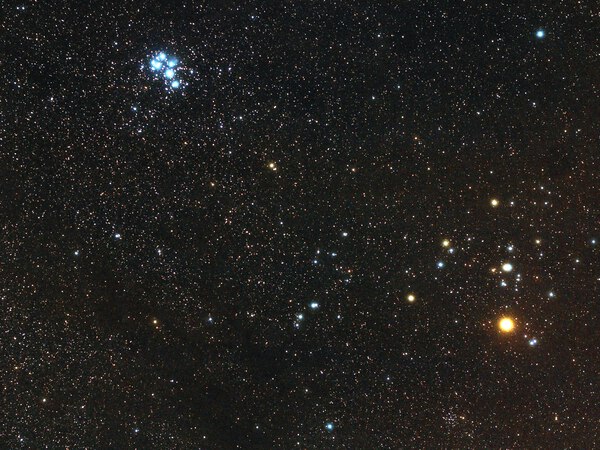
Photo courtesy of Giuseppe Donatiello, CC0, via Wikimedia Commons.
A Rohiṇī Vignette
This is a private chart included to demonstrate the way the nakṣatra themes work out in someone who is not a worldwide icon. The chart has been given with permission for the purpose of this article with data and personal details withheld.
Individual Birth Chart, Birth Data Private
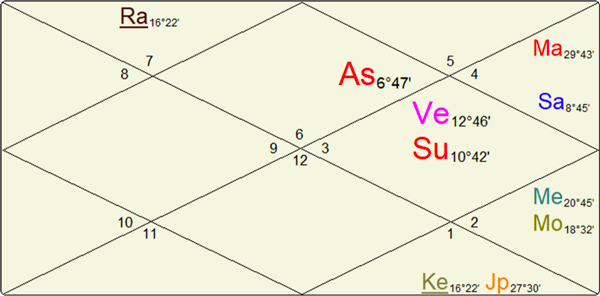
Individual Birth Chart, Birth Data Private

Though not a household name, this woman has a public profession as a teacher and healer. We can see all the grahas above the horizon indicating that she is visible in her career and activities. We would expect her life to reflect many of the Rohiṇī themes explored in this article as she has both the Lagna lord and the Moon in the ninth bhava, utterly unafflicted and cushioned by benefics in the eighth and tenth.
She is creative and mentally adept, as well as having “hands-on” skills. Of her many hobbies, a huge one is the arts, including vocal training, dance, and playing an instrument. She also loves to sew, is a fine cook, and cultivates her houseplants and her beautiful gardens.

There is an elegance and a distinctive original style about her that make her hard to miss in a crowd, and she is in full possession of her own charm and very self-aware. There is no hiding Rohiṇī’s brightness and confidence. She also has a tendency toward being showy, particularly with respect to her colorful attire. This native makes a statement with her clothing choices by using fabrics of distinctive qualities and rare colors. (As well as being beautiful), her ornaments are statements, as she has a taste for one-of-kind spiritual jewelry pieces.
Like Tina Turner, her Moon is exalted and in Rohiṇī, but in this case, it is close to a new Moon rather than a full Moon. However, it is still an excellent ninth bhava, not only for the reasons enumerated above, but because it is greatly strengthened by the Mahā Parivartana Yoga between the ninth and tenth lords, Venus and Mercury. This relationship spawns many other auspicious combinations for prosperity and rise in life. The great emphasis on the ninth and tenth bhāvas is reflected in the priority she gives to dharma as a guide for her private and professional life.
The themes of life and death and life cycles are very present in this Rohiṇī native. In her own words: “If I can bring a child into this world, I can do anything…!” And she reported to have felt a “godly” connection during the natural act of childbirth. She described a preoccupation as a child with existential questions like “Who am I?” and “Why am I here?” and noted a distinct feeling of separation from the individual Self and a greater whole. She often refers to the death of the body as a kind of blessing rather than a morbid experience, and on numerous occasions throughout her life has been “called on” to act as a sort of death doula to those facing the end of life. Her experience during these times with people is self-described as “culminations of the whole human story felt in a single moment.”
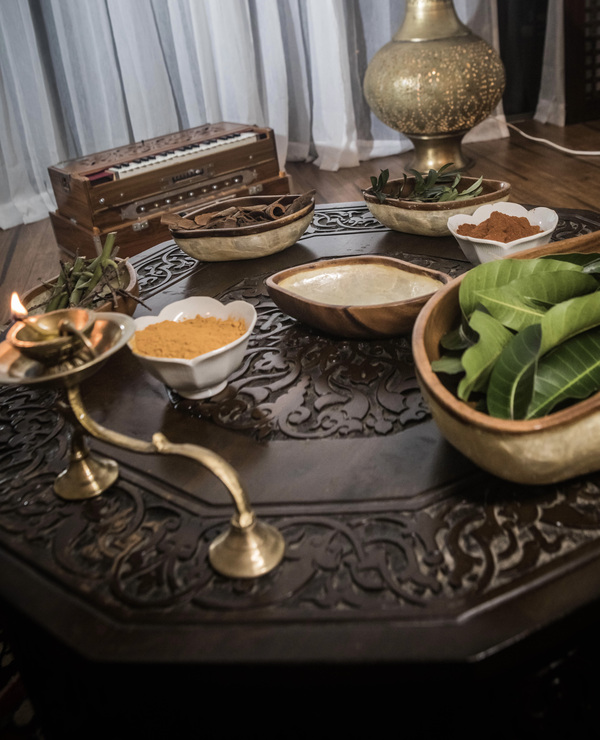
The chart combination of Jupiter and Ketu in the eighth bhāva supports her experience of the end-of-life stage. These themes are also reinforced in her choice of career as an Ayurvedic Practitioner, which can be viewed as the other side of the life and death equation. These themes, alongside a prioritized spiritual nature, seem to be supported by her running the daśās of Rāhu and Jupiter in the prime time of life. Both are greatly activating the 2/8 axis, a strong signifier of ancient oral traditions.
Another prominent aspect of Rohiṇī is cultivation of plant life, i.e., herbs, food, etc. Both the root word, ruh, meaning “to grow” and the pratimā of the star, the bullock cart, can indicate agriculture. Growing things seems to be directly or indirectly thematic for this native and is represented abundantly in her life choices—growing and preparing. Her career as an Ayurvedic Practitioner is an evolution of her love of gardening and growing things that easily morphed into the transformation of plants and herbs into oils for body care and into a healthy Ayurvedic approach to diet and cooking. All of these characteristics support creating a hospitable environment for growth. In her case, this also means as a hostess, who is assiduous in being sure her guests are welcomed and well looked after, which is a time-honored value in all cultures.
The seeds she has planted in her life have grown and prospered and, in many ways, she can be viewed as lucky, in the sense of opportunities that arise, unexpected gifts that have come, and an unusual ability to land in favorable conditions. And to her credit, those close to her prosper and benefit, as well, from the boon of her generosity.
Author: Anay Abreu

Anay Abreu, Ayurveda Professional is director of Sampoorna Ayurvedic College in South Florida. Her introduction into the Vedic Sciences began 20 years ago through Yoga and Vedanta. Anay continues to study and teach in the U.S and India.
Endnotes:
New World Encyclopedia. n.d. Brahma. Accessed June 2021. https://www.newworldencyclopedia.org/entry/Brahma. ↑
Radhe. 2014. The Divine Forces of the Lunar Nakshatras: as Originally Portrayed in the Vedas. CreateSpace Independent Publishing Platform: 55. ↑
Ibid. ↑
n.d. "Astrodatabank." astro.com. Accessed May 23, 2021. https://www.astro.com/adb-search. ↑
Wikimedia Foundation. n.d. Tina Turner. Accessed June 2021. https://en.wikipedia.org/wiki/Tina_Turner. ↑
Brainyquote.com. n.d. Accessed June 2021. https://www.brainyquote.com/quotes/tina_turner_268817. ↑
Vargottama is when a graha is in the same rāśi in the natal chart and the navaṁśa (D-9) chart. It can be a source of strength. ↑
Dr. G.S. Kapoor, translation/commentary/annotation. 2020. Phaladīpikā . New Delhi: Ranjan Publications:6.32. ↑
Gulla, Bob (2008). Icons of R&B and Soul, Vol. 1: An Encyclopedia of The Artists Who Revolutionized Rhythm. ABC-CLIO. ISBN 978-0-31334-044-4. ↑
Gundersen, Edna (September 30, 2008). "Tina Turner is back by popular demand". USA Today. Archived from the original on November 4, 2008. Retrieved October 27, 2008. ↑
Wilson, Julee (March 8, 2013). "Tina Turner Vogue Germany Cover, Singer's First Time Gracing Glossy". HuffPost. Archived from the original on March 11, 2013. Accessed June 4, 2021.
Works Cited:
n.d. "Astrodatabank." astro.com. Accessed May 23, 2021. https://www.astro.com/adb-search.
Brainyquote.com. n.d. Accessed June 2021. https://www.brainyquote.com/quotes/tina_turner_268817.
de Fouw, Hart and Robert Svoboda. 1996. Light on Life. Twin Lakes, WI: Lotus press.
Dr. G.S. Kapoor, translation/commentary/annotation. 2020. Phaladīpikā . New Delhi: Ranjan Publications.
Gulla, Bob. 2007. Icons of R&B and Soul: An Encyclopedia of the Artists who Revolutionized Rhythm, Volume 1.
Gundersen, Edna. n.d. USAToday.com. Accessed June 4, 2021. https://usatoday30.usatoday.com/life/music/news/2008-09-30-turner-main_N.htm.
New World Encyclopedia. n.d. Brahma. Accessed June 2021. https://www.newworldencyclopedia.org/entry/Brahma.
R. Santhhanam, translator/commentary/editing. 2018. Bṛhat Pārāśara Horā Śāstra . New Delhi: Ranjan Publications .
Radhe. 2014. The Divine Forces of the Lunar Nakshatras: as Originally Portrayed in the Vedas. CreateSpace Independent Publishing Platform.
Wikimedia Foundation. n.d. Tina Turner. Accessed June 2021. https://en.wikipedia.org/wiki/Tina_Turner.
Wilson, Julee. 2013. Huffpost.com. March 8. Accessed June 4, 2021. https://www.huffpost.com/entry/tina-turner-vogue-cover-first-time-gracing-glossy-_n_2838833. ↑

